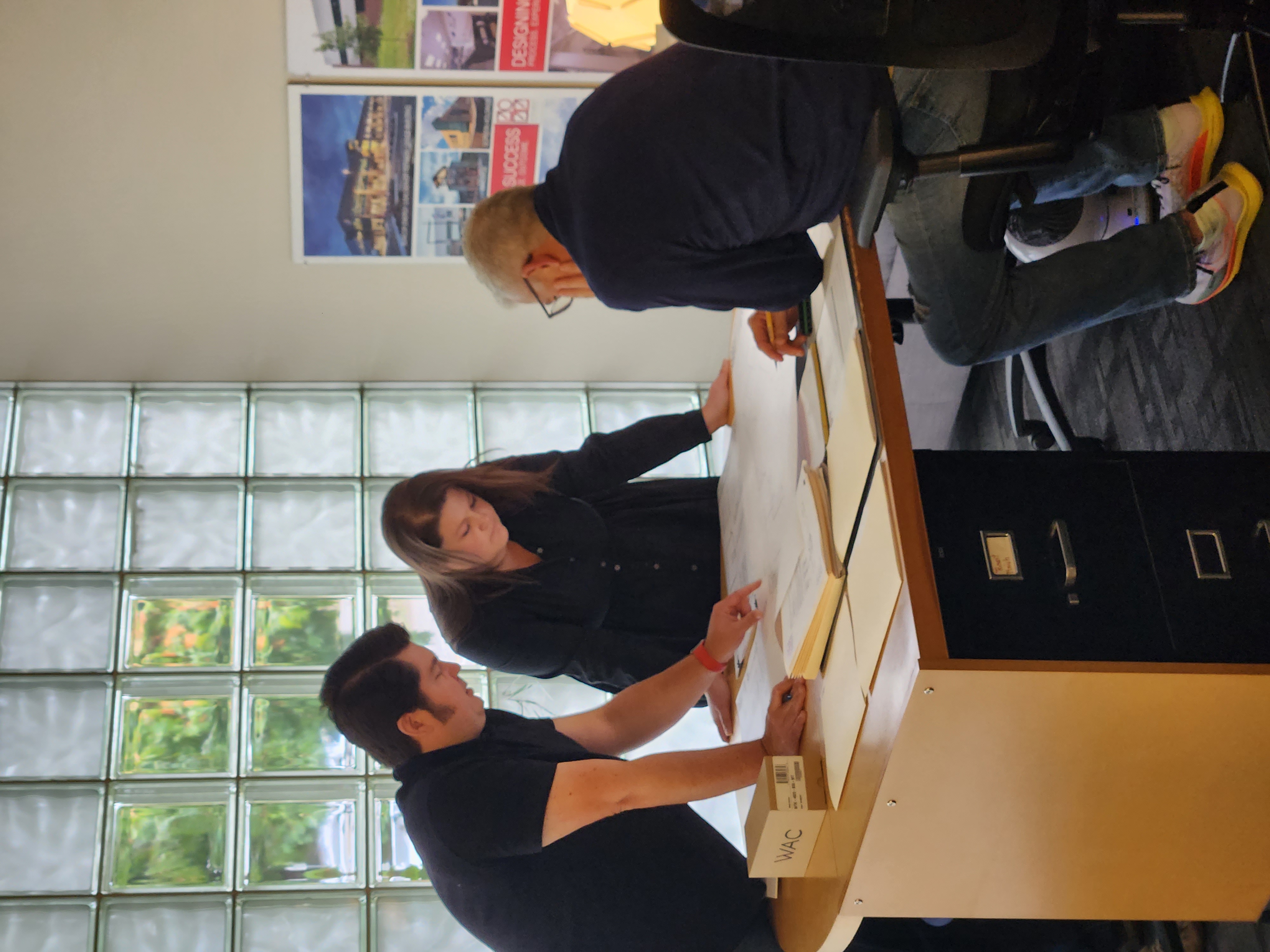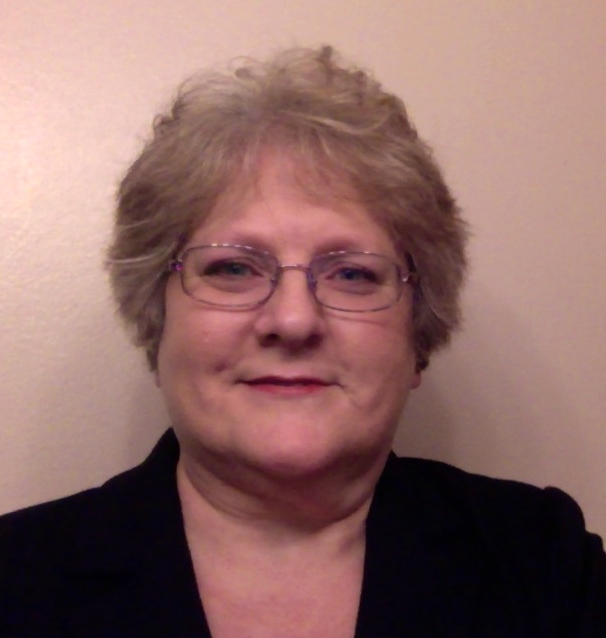  
|
Posted By Sarah Kratzner,
Tuesday, December 2, 2025
Updated: Tuesday, December 2, 2025
|

Founded in 1973, Intergroup Architects has been a trusted name in commercial design for over 50 years. Headquartered in Littleton, Colorado, we offer architectural, planning, and interior design services across the nation. Our work spans a diverse range of industries, including office spaces, healthcare, education, retail, industrial, and more, with over 11,000 projects completed in 36 states. We’ve built a reputation for delivering designs that not only meet the immediate needs of our clients but also foster long-term growth and success.
A Focus on Client Partnerships
At Intergroup, we understand that every project is unique, and that’s why we approach each one with a commitment to collaboration and trust. Whether you’re a large corporation, a small startup, or a government agency, we believe in building long-term partnerships that are grounded in clear communication and mutual success. Our team works closely with you to understand your vision, goals, and challenges, ensuring that the end result is a space that helps your business thrive.
Our approach to design is grounded in our iGTechnique—a step-by-step process that guides every project from concept to completion. This proven method ensures we stay aligned with client goals and project objectives, while also providing a seamless and enjoyable experience. Our five-stage approach includes:
1. Define the Vision – Understanding your goals and aspirations.
2. Translate the Concept – Transforming ideas into workable designs.
3. Refine and Balance the Design – Ensuring form meets function and sustainability.
4. Make it Real – Bringing the design to life through careful planning.
5. Get it Built – Delivering the project on time and within budget.
By adhering to this process, we ensure that every project is completed efficiently and to the highest standards, making your experience as smooth as possible.
A Team Built for Success
At the heart of Intergroup is our team—a group of 13 dedicated professionals, including licensed architects, LEED Accredited Professionals, and industry experts. We value collaboration, accountability, and continuous professional growth. Every team member plays a key role in the firm’s success, contributing to a culture of creativity, innovation, and excellence. This collaborative approach allows us to deliver projects that meet both the technical requirements and the specific needs of each client.
Industrial Design Expertise
Intergroup is also a recognized leader in industrial design. With over 200 industrial buildings completed, our expertise covers everything from manufacturing and warehousing to high-tech facilities and distribution centers. Our designs are tailored to maximize efficiency, flexibility, and sustainability, while also addressing industry-specific needs, such as energy efficiency, truck access, and product flow. Whether it’s a large-scale project like a multi-phased industrial park or a smaller, specialized facility, we have the experience and technical know-how to deliver outstanding results.
Client-Centered Approach
Our commitment to exceptional service is reflected in the fact that over 85% of our business comes from repeat clients or referrals. We pride ourselves on creating a strong, transparent relationship with each client, ensuring that all stakeholders are aligned and informed throughout the process. Our principal-led service is another key factor in our success. Bill Smith and Tony Casey, our senior principals, are actively involved in every project, providing direct oversight and ensuring that our clients receive the highest level of service and design quality.
Government Project Expertise
Intergroup Architects also has a solid track record in working with government agencies, including the City of Littleton, City of Colorado Springs, and the Colorado Department of Transportation. We are experienced in managing the unique challenges of government projects, ensuring they are completed on time, within budget, and to the satisfaction of all stakeholders.
“With over 50 years of experience, Intergroup Architects is proud to continue shaping spaces that foster innovation, enhance functionality, and support the success of our clients. From start to finish, we’re here to ensure your project exceeds expectations—building lasting relationships and creating environments that stand the test of time” – Tony Casey, Senior Principal
Thank you to Intergroup Architects for being a firm sponsor with SDA National. To learn more about Intergroup and their work visit their website Intergroup Architects

Tags:
Intergroup Architects
SDA Firm Sponsor
SDA National
SDA sponsorships
Society for Design Administration
Permalink
| Comments (0)
|
  
|
Posted By Jennifer Greene, CDFO,
Tuesday, January 30, 2024
Updated: Wednesday, January 31, 2024
|

We've been busy interviewing some of our members who have recently accomplished their CDFA designation by passing the Certified Design Firm Administrator exam. This week we'll hear from Blair Valdiviseo, CDFA, Operations Manager with VIA design architects, pc in Norfolk, VA.
What motivated you to earn your CDFA certification?
I was motivated to earn my CDFA certification because I want to be more validated and respected in the industry and by my peers. I wanted to challenge myself as well!
Did you have any concerns, or fears, about taking the exam?
I hold “bad-test-taker” against myself, so I knew I had to prepare well in order to perform well on the CDFA exam.
What study tools did you find most useful?
CDFA-yoU, practice questions, and printing out the materials. I printed out all of the category-specific sections into one bound document. I broke up each section and only focused on one at a time. I took the practice questions multiple times and continued to check my progress by how many I answered correctly per section. I tried my best to corelate exam materials to real-life-experiences in my role.
Did you learn anything new, or surprising, while preparing for the exam?
Yes! The IT section was very interesting, because I am assisting with a lot of IT focused goals right now. I felt I learned the most from that section. The Project Management section was also interesting, and I feel that I can share that new knowledge with my peers at work to help the improve their own processes and tactics.
What section of the exam was the most difficult for you?
I did the most poorly on the Marketing section, but that is the least of my day-to-day responsibility, so it makes sense that I had the least amount of practical experience to relate to the material.
What role, if any, has your CDFA played in advancing your professional or personal development, growth, network or career?
So far, the designation has really only bolstered me at my firm, but I am excited to get more involved with my local SDA chapter and continue learning from others and building my network.
Was your employer supportive of your CDFA goals and accomplishment?
Yes! A social media post regarding my accomplishment, internal announcement, and I received a bonus for my achievement.
What is your top tip to someone considering the pursuit of a CDFA designation?
Prepare well by really getting an understanding of the materials included, relate as much as you can to rea-world experiences, and do the practice questions A LOT!
What has obtaining your CDFA meant to you?
Earning the credential, and also only missing 10 questions on the exam, has shown me that even in a busy, fast-paced phase of life, I can focus on something and put the effort and dedication into it that will result in POSITIVE experiences and results in the end. If you put your mind to it…it can happen.
Tags:
CDFA
Certified Design Firm Administrator
Leadership
SDA
SDA National
Society for Design Administration
Permalink
| Comments (5)
|
  
|
Posted By Administration,
Monday, May 4, 2020
Updated: Monday, May 4, 2020
|
 Do you know Cherie Tucker? She’s a grammarian whose claim to fame (one of them, at least) is getting Seattle’s Nordstrom stores to correct all of their signs from “Childrens shoes” to “Childrens’ shoes.” Do you know Cherie Tucker? She’s a grammarian whose claim to fame (one of them, at least) is getting Seattle’s Nordstrom stores to correct all of their signs from “Childrens shoes” to “Childrens’ shoes.”
The Seattle Chapter has hosted Cherie as a speaker a few times, and she’s also presented for SDA National (we love the grammar/writing knowledge she shares!).
One of the things that Cherie helped me remember was the use of commas in independent clauses. An independent clause is one that can stand on its own. Like this: This sentence is an independent clause, and you should insert a comma after clause. That’s a two-part sentence that contains the conjunction “and.” The second part of the sentence (you should insert a comma after clause) is a full sentence on its own. If both parts of the clause — joined by a conjunction — can stand on its own . . . it’s an independent clause.
What a lot of people do though, is not insert a comma before the conjunction in their independent clauses. Did you know that you should add a comma before each conjunction in that case?* (Note: It depends on the context; you might consider a semicolon instead.)
Here’s where Cherie came in and helped me remember all of the conjunctions, and thus the use of commas in my independent clauses. She calls the conjunctions “FANBOYS.”
For
And
Nor
But
Or
Yes
So
If I have a FANBOY in a sentence, I know to stop and test whether I have any independent clauses. If I do, I know to insert a comma (or a semicolon) before the FANBOY. Will you?
*Tons of sites that back this up. For example:
https://depts.washington.edu/engl/askbetty/sentence_structure.php
https://www.grammarly.com/blog/comma-before-and/
http://guidetogrammar.org/grammar/commas.htm
https://getitwriteonline.com/articles/when-to-use-comma-before-and/

Judy Beebe, FSDA is our resident Word Nerd.
She currently serves as the SDA Seattle Chapter President
Tags:
SDA
Society for Design Administration
Word Nerd
Permalink
| Comments (3)
|
  
|
Posted By Administration,
Monday, April 20, 2020
Updated: Tuesday, April 21, 2020
|
 Role models are important because they help guide us in the right direction as we make life decisions, they provide inspiration and support when we need it, and they offer their experiences with similar obstacles or struggles. Throughout our lives, we will have several different role models, from our parents and coaches to peers and bosses. These people are integral influences in our lives and our careers. So how do you know if you are a role model? And why is it important? Role models are important because they help guide us in the right direction as we make life decisions, they provide inspiration and support when we need it, and they offer their experiences with similar obstacles or struggles. Throughout our lives, we will have several different role models, from our parents and coaches to peers and bosses. These people are integral influences in our lives and our careers. So how do you know if you are a role model? And why is it important?
There is no ceremony commemorating one’s transition into a “role model.” Often times, this is a gradual transition that seamlessly happens throughout the years. A Canstruction team member who becomes a team captain, who then joins the event planning committee and eventually chairs the event. Another example could be someone who participates regularly with local Habitat for Humanity events and then steps up to serve as leader with a local build event like Carter Work Project. Both of these examples allow for one-on-one connections between those in leadership positions and others, but also the connection between that individual and the organization as a whole. Have you found yourself serving on a public or community service organization board? Have you helped make significant sustained contributions to that organization? Then you are a role model.
A role model is a person whose behavior, example, or success is or can be emulated by others, especially by younger people.[1] When we are younger, we look up to our role models for inspiration and use this as a blueprint for how to achieve success and happiness. It’s important for SDA members to serve as role models because it will help each member continue their personal and professional growth, continue to practice model behavior, and guide future generations of leaders. Role models are not perfect, they are human, and they make mistakes. Don’t be afraid to step up and explore the benefits you gain from serving others. You may be surprised how much you get back in return.
One of the criteria to become an SDA Fellow is to be a role model. Have you discovered that you already are a role model and didn’t even know it? If so, you may be eligible to submit for the 2021 Fellows Class. If you haven’t taken that step to serve as a role model yet, evaluate your opportunities to do so in order to continue your leadership path and maximize your growth potential.

Sarah Wallace, FSDA is the Chair of the SDA Fellows and is a member of the SDA Atlanta Chapter.
Tags:
Role Model
SDA
Society for Design Administration
Permalink
| Comments (1)
|
  
|
Posted By Administration,
Wednesday, April 1, 2020
Updated: Friday, April 3, 2020
|
 What can senior finance leaders do to manage these headwinds? The construction industry is still considered an essential business in most states and construction companies need A|E firms to continue with their services to stay on schedule many times, so there shouldn’t be any problems, right? Probably not, especially here in the Hampton Roads, Virginia area. The A|E|C community depends on the government — federal, state, and local — as a client. While construction companies can still work, the City of Virginia Beach is examining what construction projects it can delay, so at some point, the delays are going to filter down to the A|E community. This is similar to what occurred in the 2008 recession. It really did not hit the A|E community hard until 2010. The government’s response to the crisis with an economic stimulus package has been much quicker this time, however. What can senior finance leaders do to manage these headwinds? The construction industry is still considered an essential business in most states and construction companies need A|E firms to continue with their services to stay on schedule many times, so there shouldn’t be any problems, right? Probably not, especially here in the Hampton Roads, Virginia area. The A|E|C community depends on the government — federal, state, and local — as a client. While construction companies can still work, the City of Virginia Beach is examining what construction projects it can delay, so at some point, the delays are going to filter down to the A|E community. This is similar to what occurred in the 2008 recession. It really did not hit the A|E community hard until 2010. The government’s response to the crisis with an economic stimulus package has been much quicker this time, however.
Three suggestions that may help your company:
1. Conduct scenario planning and stress tests. If you’re going to have to close down for 3 months, what is that going to look like cash-wise? If 40% of your work is municipal, and the municipalities cut 40% of their next fiscal year’s projects, how are you going to replace that revenue? Start conducting what-ifs and solutions to replace the revenue. Maybe looking at more commercial projects may be a short-term solution. Not hiring and trying to ride it out with the present staff in order to NOT have to let people go might be another. In the 2008 recession, firms suddenly wanted to get on the government bandwagon because the commercial market had dried up, but most decided too late. It takes time to establish a new client, project type, or change your business model. Diversity is good in any economy.
2. Focus on key customers. Understand your contracts and the commitments you have made. If you are in the design|build arena, you know construction is driven by schedules. Understand how having a quarter of your staff out for COVID-19 related absences — sick, childcare — may affect your ability to meet milestones, and work to minimize those delays. Contact your clients, officially in some instances, that you may have a delay that will affect schedules.
3. Get a jump on cash flow. Recalculate 1. how much cash you need to keep your business afloat. Here are a few ideas to consider:
· Line of Credit. Lots of firms are going to be looking to max-out their lines of credit. Contact your banker and discuss this to ensure lines of credit remain available. Be prepared to handle the fact that if your line of credit is not now personally guaranteed and if you ask for a larger amount, the bank may look for a personal guarantee from the owners, at least temporarily.
· Factoring Companies. Look for alternative sources of cash. There are factoring companies for your accounts receivable, but you need to get in touch with them now. Your bank loan officer is a good source for a lead on a company.
· Owners personal cash reserves. Owners need to reexamine their own personal cash reserves, too, and assess the liquidity of any assets they may need to count on for cash.
· Stay on top of Accounts Receivable. Do not let this slide.
Read the entire article by downloading the attached file. Share your comments below on what your firm is doing to manage the financial risks during the COVID19 pandemic.
Special thanks to Deborah Gill, CPA, FSDA from SDA Hampton Roads Chapter for sharing this article.
Attached Files:
Tags:
Cash Flow
SDA
Society for Design Administration
Permalink
| Comments (0)
|
|